|
|
VIDEO CONFERENCE ADDRESS AT THE IX CONVOCATION OF THE UNIVERSITY HYDERABAD, HYDERABAD
29-12-2004 : Hyderabad
The Mission of University: Empowerment
I am indeed delighted to participate in the ninth Convocation of the University of Hyderabad. I take this opportunity to wish the University students for their excellent academic performance. I greet the Chancellor, Vice Chancellor, Professors, teachers and staff for shaping the young minds to contribute to the nation in multiple fields. Dear graduates, when you complete the university education, the knowledge that you have received will enable you to meet any challenge. With a big aim in life and hard work with devotion and above all indomitable spirit to combat the challenges, will lead you to success.
Now I would like to share with you my thoughts on the forewarning measures needed to face the fury of nature, in which the university has a great role to play.
High Intensity Tidal wave early warning system
You are all aware of the damage caused to our people their property and the disruption of normal life in the coastal area of Tamil Nadu, Andaman & Nicobar Islands, Andhra Pradesh, Pondicherry, Kerala and many other coastal states due to the impact of Tsunami on 26 December 2004.
The pacific nations have got Tsunami warning system which is designed to protect 27 pacific countries residents from distant-source tsunamis. After the earth quake has occurred beneath the sea floor at the shallow depth, it takes 3 hours to build dynamic waves of large heights. All communities within a 3 hour travel time of the epicenter are put into a tsunami warning situation.
That means, technologically there is a solution. It is essential for Indian sea shores are provided with tsunami warning system or equivalent with the Indian control centre connected to the Pacific tsunami warning centre. Since, the Central University Hyderabad has expertise in multiple areas at one single place; they can evolve an integrated technological solution in the form of sensor, communication system, networking and high intensity tidal wave warning system. This may involve the participation of multiple institutions like University, ISRO, Departments of Science and Technology, Ocean development and Atomic Energy.
Like this there are number of challenges in our national scene which all of you are witnessing in your day to day life. It is necessary for the faculty members and students of the University to be sensitive to such occurrences and development needs, so that the university can productively participate in the welfare of our citizens. Now I would like to discuss with you about the importance of competitiveness.
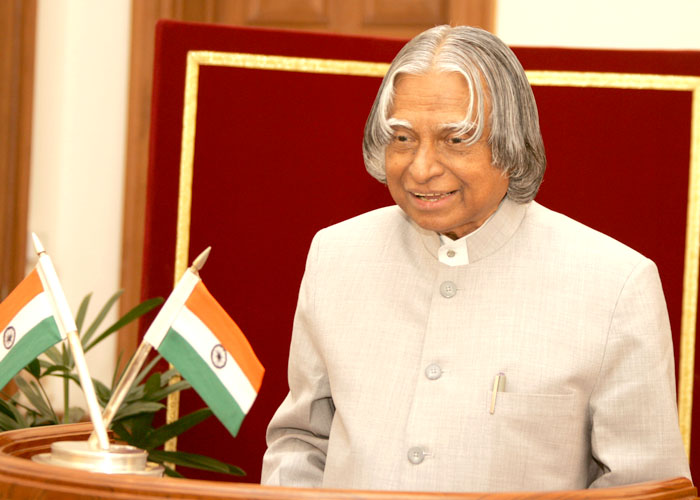

Competitiveness in the WTO environment
I was studying the development patterns and the dynamics of connectivity between nations, especially in trade and business. As you all know the world has few developed countries and hundreds of developing countries. What is the dynamics between them and what connects them? Developed country has to market their products in a competitive way to different countries to remain as developed country. The developing country to get transformed into developed country; they too have to market their products to other countries in a competitive and aggressive way. Competitiveness is the common factor between aspiration of developing and developed countries. Competitiveness has three dimensions: quality of the product, cost effectiveness and supply in time. Indeed this dynamics of competitiveness in marketing of products by developing and developed countries is called the law of development. If India has to become competitive, we have to be innovative. Innovation has to come from our Universities, in every field of learning.

Economic Growth in different societies
During the last century, the world has undergone a change from agriculture society, where manual labour was the critical factor, to industrial society where the management of technology, capital and labour provided the competitive advantage. Then the information era was born in the last decade, where connectivity and software products are driving the economy of a few nations. In the 21st century, a new society is emerging where knowledge is the primary production resource instead of capital and labour. Efficient utilization of the existing knowledge with innovation can create comprehensive wealth of the nation and also improve the quality of life - in the form of better health, education, infrastructure and other social indicators. Ability to create and maintain the knowledge infrastructure, develop knowledge workers and enhance their productivity through creation, growth and exploitation of new knowledge will be the key factors in deciding the prosperity of this Knowledge Society. Whether a nation has arrived at a stage of knowledge society is judged by the way the country effectively deals with knowledge creation and innovative knowledge deployment in all sectors like IT, Industries, Agriculture, Health Care etc., The university is indeed a place of knowledge that creates innovations.
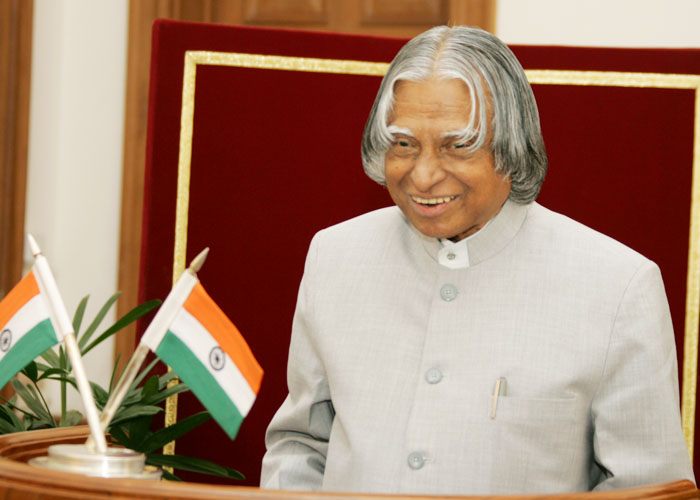

Innovation is the capital
I was studying the Global Competitiveness Report for the year 2003-04. There I find in terms of Innovative Capacity Index US is ranked one, Singapore 6, South Africa 27, China 40, Brazil 42 and India 44. In the same report I noticed that the proportion of Scientists and Engineers Index is stated as US 4, Singapore 6, South Africa 38, China 43, Brazil 51 and India 60. Thus, we can see the large proportion of new ideas and innovation are generated in the Universities in USA. This innovation arises from private sector initiative and the R & D productivity of the firm, shape by local policies and nature of local institutions. National innovative capacity has to be the country?s important potential to reinforce both political and economic entity with commercially relevant competitive products. This capacity is distinct from purely scientific or technical achievements and focuses on the economic application of new technology. Thus, for building innovative capacity, we require the partnership of private sector, public sector, R & D and academia as a group. I would recommend the Hyderabad University to work towards building the innovative capacity amongst its faculty and impart knowledge with students.
To achieve a goal what is needed is not only knowledge, but also a passion. The passion should not be limited to the technical aspects but it should also aim towards creating a concern for the society with a view to finding positive solutions to the problems.
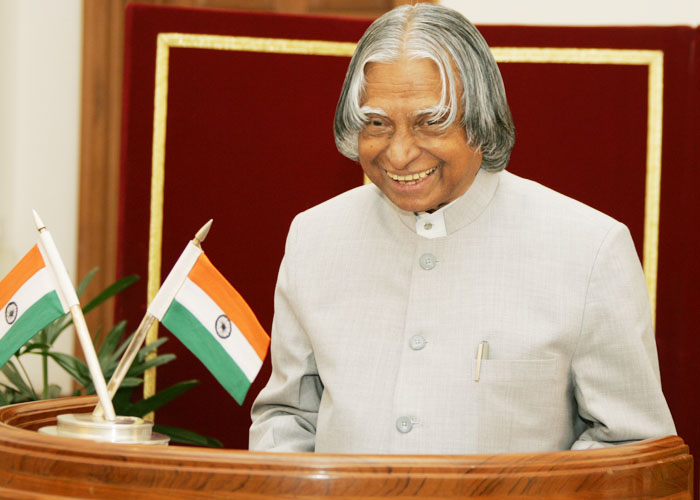

Team building
Most of the discoveries and innovation are team efforts. Education system should work towards team building among the students. Every student must have an opportunity to play the role of a team member and a team leader so that he can see both sides of the fence. The amount of information that we have around us is overwhelming. The management of knowledge therefore must move out of the realm of the individual and shift into the realm of the networked groups. The students must learn how to manage knowledge collectively. When the information is networked the power and utility of the information grows as squared as predicted by Metcalfe's law. Information that is static does not grow. In the new digital economy, information that is circulated creates innovation and contributes to national wealth. In this context, let us discuss the national scenario and its priorities.

Our National mission - challenges
Our nation is going through a major challenge of uplifting of 260 million people who are below the poverty line. They need habitat, they need food, they need health care, and they need education and employment and finally resulting in a good life. Our GDP is growing at more than 6% per annum. Whereas, the economists suggest that to uplift the people below poverty line, our economy has to grow at the rate of 10% per annum consistently, for over a decade.
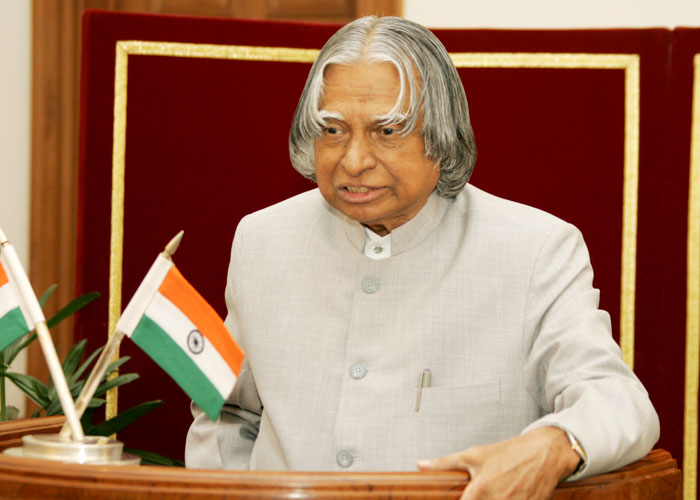

Ambience in the Nation
Presently, a new situation is emerging in the national scene of 2004. In the Indian history, very rarely we have come across a situation, all at a time, an ascending economic trajectory, continuously rising foreign exchange reserve, global recognition of technological competence, energy of 540 million youth, umbilical connectivities of 20 million people of Indian origin in various parts of the planet, and the interest shown by many developed countries to invest in our engineers and scientists including setting up of new R&D centers. The priorities of the Government include an emphasis on economic development by ensuring growth rate of 7% to 8% annually, enhancing the welfare of the farmers and workers and unleashing the creativity of the entrepreneurs, business persons, scientists, engineers and other productive forces of the society.
Integrated action: To meet the need of one billion people, we have the mission of transforming India into a developed nation. We have identified five areas where India has a core competence for integrated action:
(1) Agriculture and food processing
(2) Reliable and Quality Electric power, Surface transport and Infrastructure for all parts of the country.
(3) Education and Healthcare
(4) Information and Communication Technology
(5) Strategic sectors.
These five areas are closely inter-related and if well done would lead to food and economic security and national security.
Essential Connectivities: The integrated methods, which will bring prosperity to rural India is PURA (Providing Urban amenities in Rural Areas), which has four connectivities. The physical connectivity of the village clusters through quality roads and transport; electronic connectivity through tele-communication with high bandwidth fiber optic cables reaching the rural areas from urban cities and through internet kiosks; knowledge connectivity through education, vocational training for farmers, artisans and craftsmen and entrepreneurship programmes; these three connectives leading to economic connectivity through starting of enterprises with the help of banks, micro credits and marketing the products.
Recently, we made some study at various parts of the country how the PURA model or its components are in position. I would like to discuss one of the examples.

Periyar PURA
Recently I had visited Periyar Maniammai college of technology for women and inaugurated a PURA Complex. I thought of sharing with you the developmental concept of a cluster of over 65 villages near Vallam, Thanjavur district of Tamilnadu which involves a population of 3 lakhs. This PURA complex has all the three connectivities - physical, electronic and knowledge - leading to economic connectivity. The centre of activity emanates from the women engineering college that provides the electronic and knowledge connectivity. Periyar PURA has health care centres, primary to post graduate level education and vocational training centres. This has resulted in large scale employment generation and creation of number of entrepreneurs with the active support of 850 self-help groups. Two hundreds acres of waste land has been developed into a cultivable land with innovative water management schemes such as contour ponds and water sheds for storing and irrigating the fields. All the villagers are busy in either cultivation, planting Jatropha, herbal and medicinal plants, power generation using bio-mass, food processing and above all running marketing centres. This model has emanated independent of any government initiative. The committed leadership has been provided by the Engineering institution. This gives me the confidence that PURA is a realizable proposition and this movement can be multiplied by thousands of entrepreneurs, educational administrators and philanthropic institutions with the support of the government agencies.
The University of Hyderabad can study the Periyar PURA and evolve a unique PURA system for promoting and empowering the people living in the adjoining villages and creating a platform for learning about the economics of PURA enterprise, which can be beneficial to other institutions in Andhra Pradesh. PURA enterprise can become an employment generator for the state.
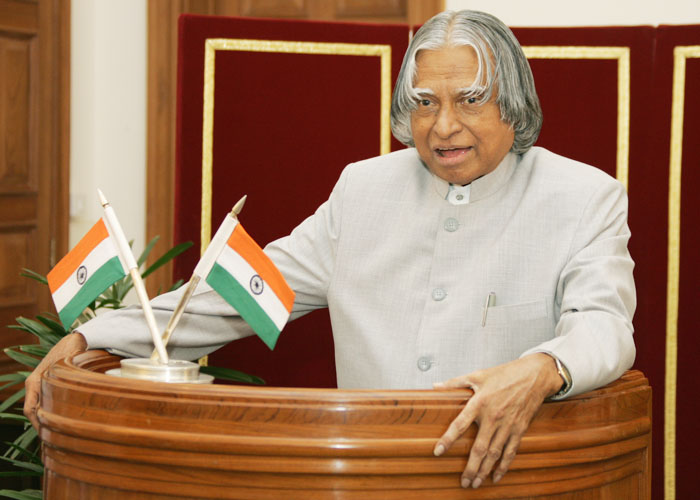

Employment Generation through Entrepreneurship
There has been substantial growth in our higher educational system and the University is generating over thousand professionals every year and overall for the whole country it is around 3 million per year from 300 Universities. However our employment generation system is not in a position to absorb the graduates passing out from the university leading to increase in educated unemployed in the region year after year. There is a large mismatch between the skills required for the modern economy and the education imparted to most of these students. In addition, economic growth and investments have not kept pace with the availability of human resources. This situation will lead to instability in the social structure. We need higher education focused on and oriented towards high value and productive employment opportunities. A three pronged strategy is needed to make education more attractive, make it skill imparting and simultaneously create employment generation potential ? how do we do that?
Firstly, the educational system should highlight the importance of entrepreneurship and prepare the students right from the college education to get oriented towards setting up of the enterprises which will provide them creativity, freedom and ability to generate wealth. Diversity of skills and perseverance in work make an entrepreneur. It should be taught to all the students. In addition, college syllabi even for arts, science, and commerce courses should include topics and practical where such entrepreneurship is possible. When the graduates leave the campus, they carry the Degree and entrepreneurship course Diploma.
Secondly, the banking system should provide venture capital right from every village level to the prospective entrepreneurs for undertaking new enterprises, with hassle free loan assistance.
Thirdly, there has to be an economic pull for human resources; for example generation of marketable products and enhancement of purchasing power among the people through the implementation of national missions. The University, Government and the private enterprises should become facilitators for creating this entrepreneurship scheme through the support of the banking system and the marketing system. Entrepreneurs have to produce the competitive products for becoming successful in their missions. I would like to discuss in detail one of the large-scale employment and wealth generating avenues in the rural sector.
Jatropha ? Biofuel: Government has decided to permit mixing of 10% bio-fuel with diesel. This has opened up new opportunities for employment and wealth generation. We have nearly 63 million hectares of wasteland available in the country, out of which 33 million hectares of wasteland have been allotted for tree plantation. Certain multi-purpose trees such as Jatropha can grow well in wasteland with very little input. Once grown the crop has a fifty years of life. Fruiting can take place in this plant in less than two years.
It yields oil seeds up to five tonnes per hectares per year and produces two tonnes of bio-fuel. Presently, the cost of bio-diesel through the plant is approximately Rs. 17 to Rs. 19 per litre which can be substantially reduced through choice of right size of the plant and using high yield variety plantation. Bio-fuel plants grown in 11 million hectares of land can yield a revenue of approximately Rs. 20,000 crore a year and provide employment to over 12 million people both for plantation and running of the extraction plants. This is a sustainable development process leading to large scale employment of rural manpower. Also, it will reduce the foreign exchange outflow paid for importing crude oil, the cost of which is continuously rising in the international market. Moreover, use of Bio-fuel is Carbon mono-oxide emission free. This oil can also be used for soap and candle industries. De-oiled cake is a raw material for composting. Also Jatropha plantation provides a good environment for honey production. We should absorb best of the technologies available worldwide and start commercial operation soon, instead of staying at pilot plant levels. I would request the industrial community and entrepreneurs assembled here to take the initiative, generate detailed project report in collaboration with technical agencies such as the Energy and Research Institute (TERI) on this project and promote entrepreneurs with financial support from the banks in rural areas who can undertake the plantation and commissioning of extraction plant leading to production of cost-effective bio-fuel. Can there be a better project than this for coherent development of our rural sector and sustainable business preposition for industry? I am sure University of Hyderabad, can participate proactively in this national wealth generating mission.

Conclusion: Creative Leadership
There are 540 million youth below 25 years in the population of a billion people. The nation needs young leaders who can command the change for transformation of India into a developed nation embedded with knowledge society. The leaders are the creators of new organizations of excellence. Quality leaders are like magnets that will attract the best of persons to build the team for the organization and give inspiring leadership even during failures of missions, as they are not afraid of risks. I have seen and worked with creators of vision and missions.
One of the very important ingredients for success of the vision of transforming India into a developed nation by 2020 is the evolution of creative leaders. I am giving a connectivity between developed India, economic prosperity, technology, production, productivity, employee role and management quality, all of which linked to the creative leader. Who is that creative leader? What are the qualities of a creative leader? The creative leadership is exercising the task to change the traditional role from commander to coach, manager to mentor, from director to delegator and from one who demands respect to one who facilitates self-respect. The higher the proportion of creative leaders in a nation, the higher the potential of success of visions like ?developed India.?
I congratulate the students who have been awarded degrees during this convocation. My best wishes to all the members of this university for success in their missions.
May God bless you.
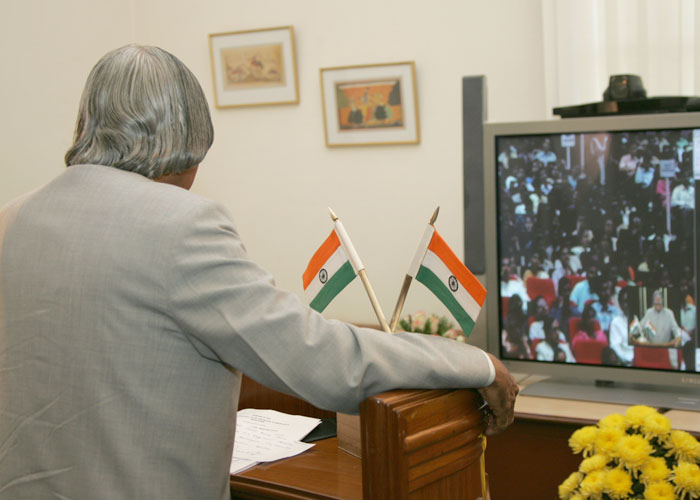
<<Back
|
|